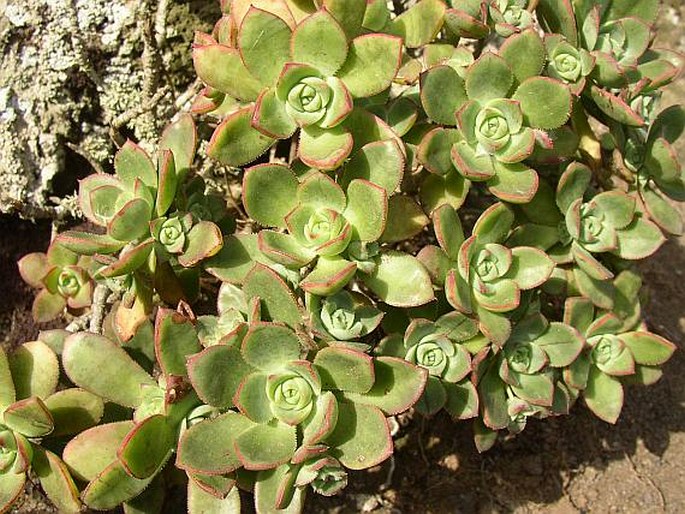Syn.: Sempervivum haworthii (Webb et Berthel.) Salm-Dyck ex Christ
Family: Crassulaceae J. St.-Hil.

Distribution: An endemic species of the Canary Islands. It occurs only on Tenerife, but is well established in California too (Orange County, San Diego County).
Ecology: It grows on rocks and slopes in the northwestern part of Tenerife, from sea coast to 500 m above sea level.
Description: A shrub closely dome-shaped, 15–25 cm high. The stems are branched, woody, the bark is rough-reticulate and fissured. The rosettes are lax, concave, 15–25-leaved, the blade is obovate, 3–6 cm, gray-green, often red-edged, marginal cilia curved forward. The cymes are lax, 5–15 cm, glabrous, the flowers are about 1 cm in diameter, the calyx is glabrous, the petals 7–9, cream.
Use: This evergreen succulent is cultivated in the European and American houses and gardens.
Note: Aeonium haworthii hybridizes with A. urbicum, this hybrid has been described as Aeonium ×mixtum P. V. Heath. With Aeonium pseudourbicum creates a hybrid Aeonium ×pseudohawbicum Bañares.



These images were taken in Spain, the Canary Islands, Tenerife, the Teno Mts. (March 28, 2006).


